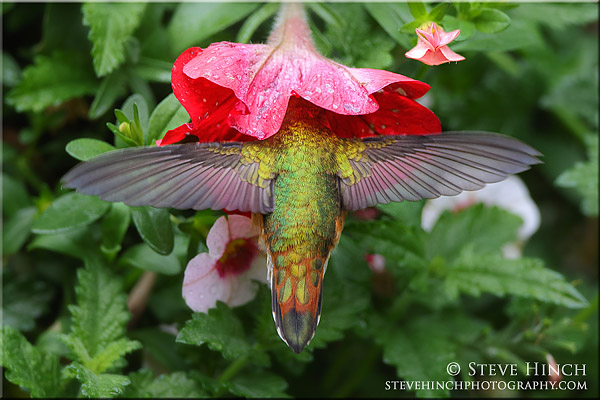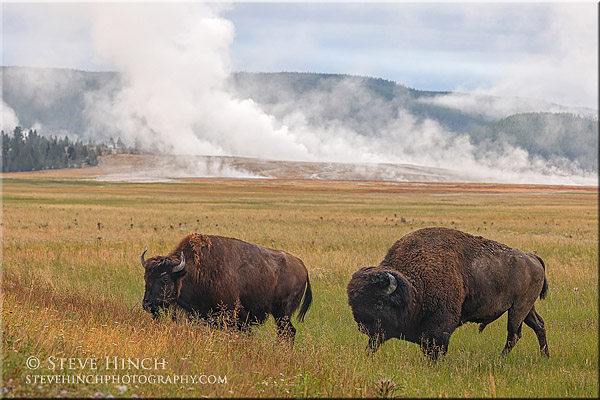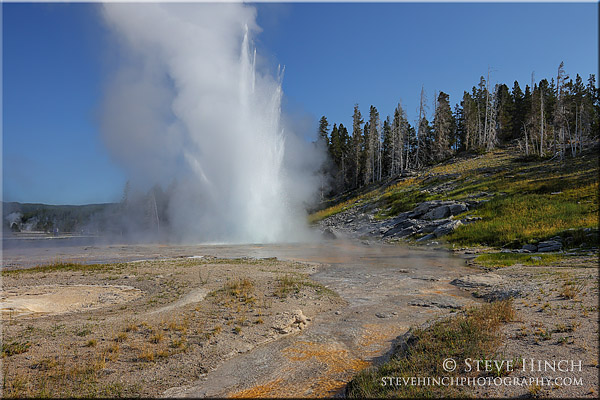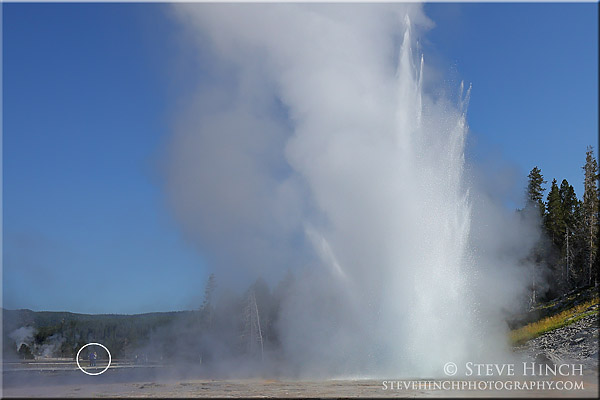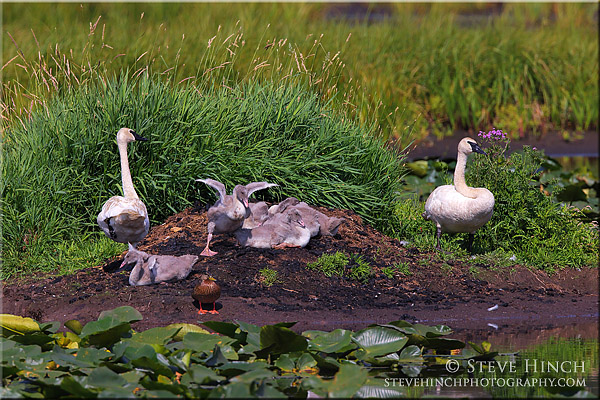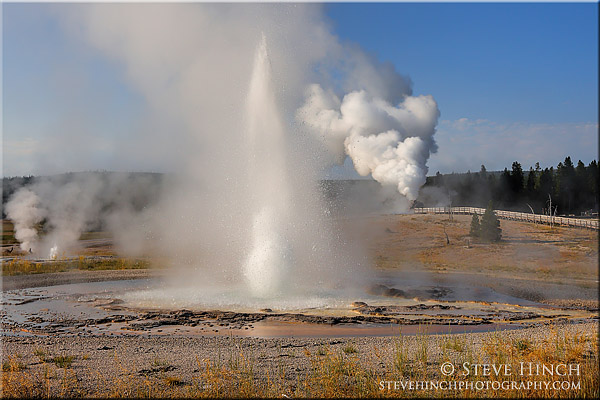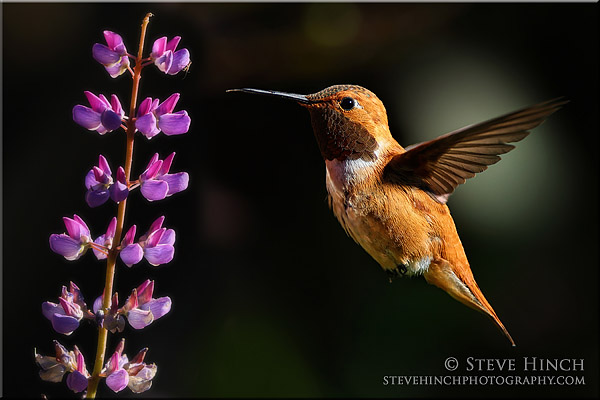
Yellowstone National Park just finished events surrounding its sesquicentennial celebration. The park was established as the world’s first national park 150 years ago in 1872. While events this year didn’t really focus on the natural beauty of the park which was the reason for it’s establishment, I always prefer enjoying Yellowstone’s natural beauties. The geothermal features of Yellowstone are the largest concentration of such natural wonders anywhere in the world. 150 years ago, our forefathers had the wisdom to recognize this and set aside Yellowstone as a national park to protect and preserve this landscape. Recently I stayed the night at Old Faithful and I headed into the geyser basin before sunrise. Old Faithful looked as though it might be nearing an eruption (predictions aren’t posted overnight), so I decided to wait it out. As fate would have it, just as the morning sun peeked over a distant ridge, bathing the geyser basin in beautiful light, Old Faithful put on it’s show. Old Faithful Geyser and the thermal features throughout Yellowstone were and always have been the reason that this amazing park exists for the benefit and enjoyment of all people.


